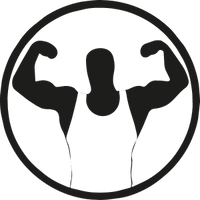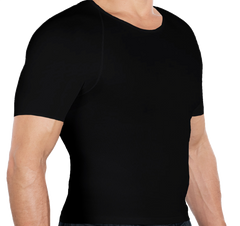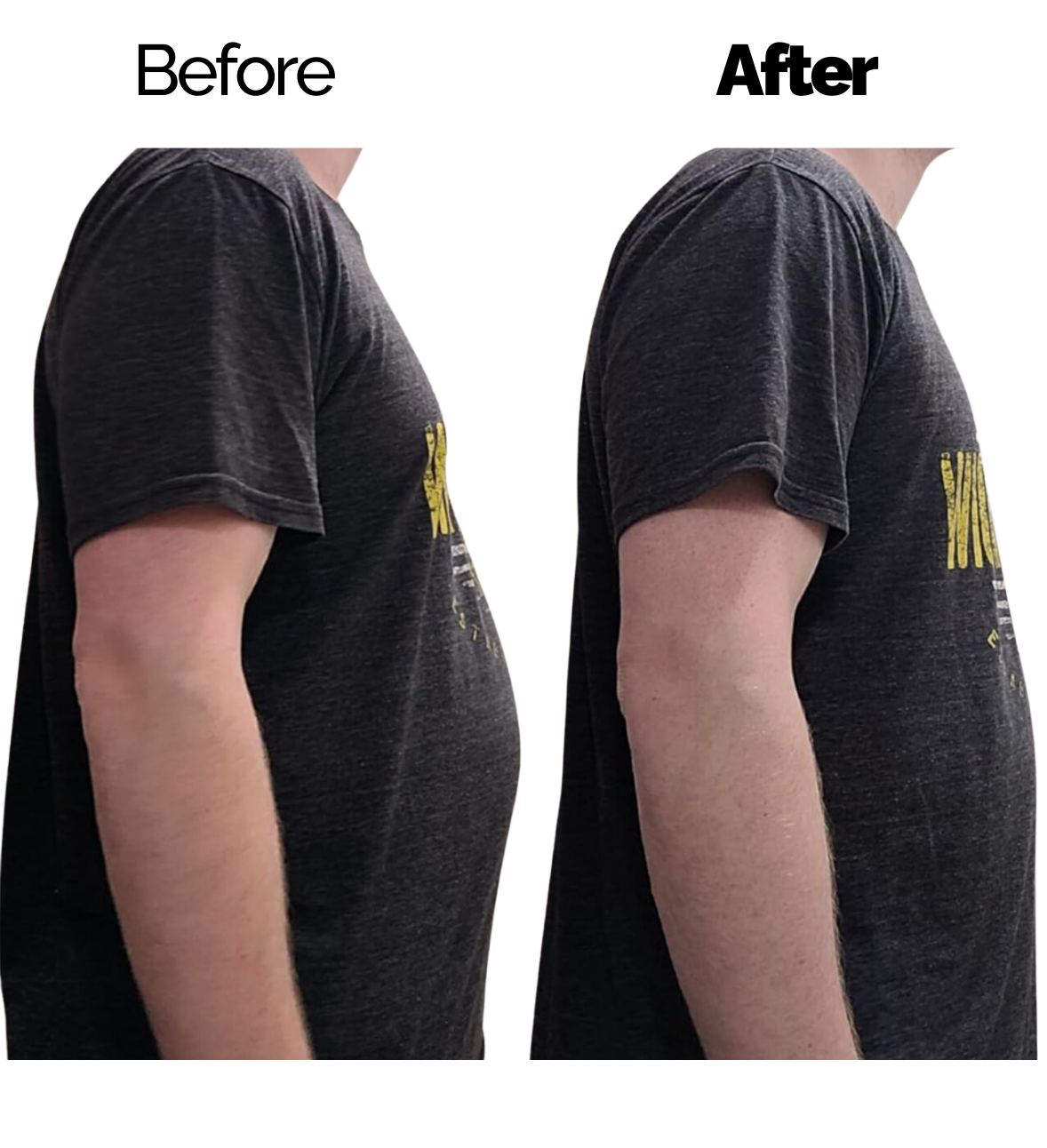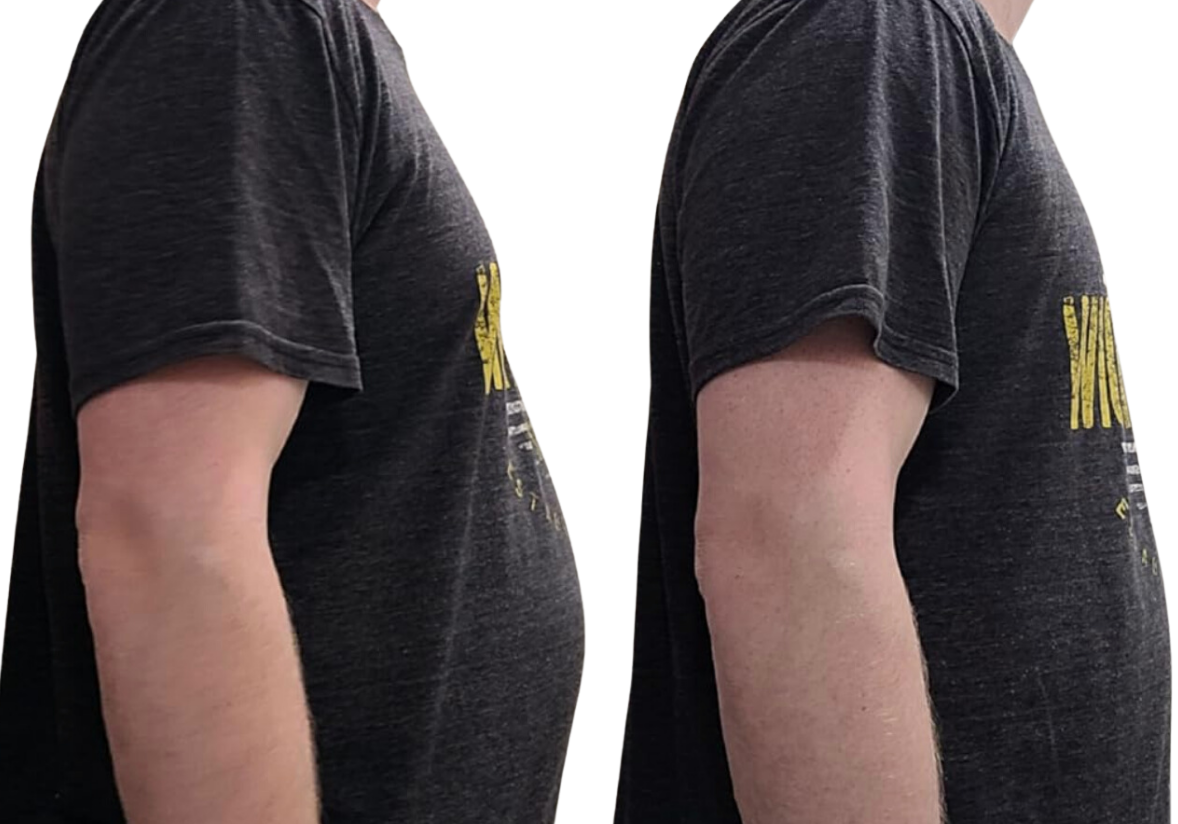Are you concerned about your enlarged breasts? Don't worry, you're not alone.
Gynecomastia often called "man boobs," occurs when males develop enlarged breast tissue due to a hormonal imbalance.
This condition affects about 60% of men worldwide at different times in their lives.
To put it another way, six out of ten men will experience gynecomastia at some point, either during puberty or in old age.
In this post, we explore ways to get rid of gynecomastia without surgery.
Dietary changes
Sometimes, what you eat can lead to gynecomastia. Here are some changes to your diet you need to make to get rid of your gynecomastia.
Eat more iodine-rich foods
Your body has a small organ called the thyroid gland. You can find this gland in the front of your neck, near your windpipe.
The thyroid gland makes hormones that play a big role in keeping you healthy.
For example, if your body doesn't make enough thyroid hormone, it can mess with how your Leydig cells work. These cells are key to making and releasing testosterone.
So, it's a good idea to get enough iodine in your diet. This helps your thyroid do its job well.
Before adding more iodine to your diet, talk to your doctor to check your iodine levels.
Your doctor will help you figure out if you need more iodine and how much is safe to avoid too much.
Eat enough food
If you follow a diet, like Keto, which limits your calorie intake, it might lower your testosterone levels. This can lead to gynecomastia.
Make sure you get enough calories for your age and body size.
On average most men need 2500 calories to maintain their weight. This number can change based on your activities and age.
Also, don't skip meals even if you're "busy." This has an impact on your testosterone levels and might cause:
- Lower blood sugar
- A slower metabolism making weight loss harder
- Higher risk of diabetes due to low blood sugar
- Overeating and gaining fat
- More stress because you lack energy to do your tasks well
Eat a balanced diet
Besides eating enough food, make sure your meals give you all the key nutrients.
Your meals should have lean proteins, fruits whole grains, and veggies.
Research shows some foods affect how much testosterone your body makes.
These foods include:
- Oysters
- Ginger
- Pomegranates
- Fortified plant milk
- Vegetables like kale, Swiss chard, and spinach
- Fatty fish such as trout, sardines, herring, salmon, and Atlantic mackerel
You should stay away from certain foods, as they make your body fat increase, which boosts aromatases activity.
Aromatase is an enzyme that changes androgen (testosterone) into estrogen.
So, the more fat you have the higher your estrogen levels will be, which causes gynecomastia.
Some of the foods to stay away from include:
Processed foods
A lot of ready-to-eat and frozen dishes or snacks belong to the processed food group.
They offer little nutritional benefit and contain huge amounts of fats, sugar, and salts.
Studies show that some processed foods have high levels of trans fats, which can have an impact on testicular function and decrease testosterone levels.
Foods in plastic or can packaging
Consuming foods stored in plastic containers or cans can hurt your hormone balance.
Take, for instance, the plastics or cans used to package foods. They have chemicals like bisphenol S and bisphenol A (BPA).
These two chemicals lower testosterone production and release, which makes gynecomastia more likely to happen.
Cut down on alcohol
The National Institute on Alcohol Abuse and Alcoholism states that drinking too much alcohol throws off your body's hormone balance.
This problem can even make both men and women unable to have children.
For example, scientists from the institute looked at 20 men who drank a lot and 20 who didn't drink at all.
They found that the heavy drinkers had higher levels of follicle-stimulating hormone and estrogen than the non-drinkers.
So, if you can't quit drinking, you should at least cut back.
Changes in daily habits
Some of your everyday habits might cause your man boobs. But you can make some tweaks to improve how you look.
Work out often
This holds true for everyone, but it's important if you're carrying extra weight.
The reason? People with more body fat have a higher risk of developing gynecomastia.
Working out for at least 200 minutes each week can help you lose weight and boost your testosterone levels.
On top of that, exercise:
- Eases anxiety and depression
- Keeps many long-term health problems like heart disease at bay
- Lowers stress
- Helps you sleep better
- Boosts your brain power
- Makes your bones and muscles stronger
- Improves how your body looks
Here are some types of exercise you can try to get rid of gynecomastia:
- Swimming
- Running 100 or 200 meters
- Walking
- Pushups decline pushups
- Bench presses
- Goblet squats
How to make your workout routine work
Begin at a slow pace. For walking, try to cover half a kilometer on day one then add more distance as you progress. This rule applies to weightlifting and other exercises too.
At the gym, make sure you lift weights the right way to prevent back issues or other injuries.
You don't need to work out every day; three times a week is enough.
Quit using drugs
Most drugs people misuse can cause gynecomastia to develop.
They include:
- Marijuana
- Heroin
- Amphetamines
- Steroids like prednisone
Stopping drug abuse on your own can be tough. Getting help from a rehab center can make a big difference.
Stay away from plant oil products.
Items made with plant oils like tea tree or lavender can increase estrogen production and make your condition worse.
You should stop using products that contain these oils. This includes certain soaps and lotions.
Update your wardrobe
Gynecomastia won't harm your health, but it can make you feel self-conscious when others judge you.
You can hide your gynecomastia by wearing a sports bra or even better, Esteem Apparel vests. These vests will smooth out your chest making your condition hard to spot.
Also, Esteem Apparel vests keep their shape after regular use, and you can wear them under any shirt or sweater.
Don't expect quick results; it takes time to see changes.
After you begin changing your eating habits and daily routines, you just need to stick with it, and you'll see results.
Don't give up if you can't spot changes right away; it takes a while. Even for teens, the problem can last up to three years before it goes away.
When to visit a doctor
If you think your medicines are causing the gynecomastia
Some drugs could lead to gynecomastia. These include:
- Tricyclic antidepressants
- Anti-androgens
- Anabolic steroids
- Antiretroviral medicines
- Some antibiotics
- Heart drugs
- Chemo drugs
Talk to your doctor if you think your medications might be causing your gynecomastia.
Based on the evaluation, your doctor might lower the dose or change you to a different drug without these side effects.
When you notice other symptoms
We learned earlier that gynecomastia isn't a dangerous condition.
However, you might develop some concerning conditions along with gynecomastia such as:
- Pain in your nipples or around the breasts
- Discharge from the nipples
- Enlargement of one breast
- Tenderness around the breast.
Tell your doctor if you have any of these symptoms so he can address them sooner.
Final word
Despite what many think, surgery isn't the only way to eliminate gynecomastia.
You can treat the condition by consuming enough nutritious food, working out, cutting down on alcohol, and staying away from drugs. Sure, the process might take longer, but it's effective.


























